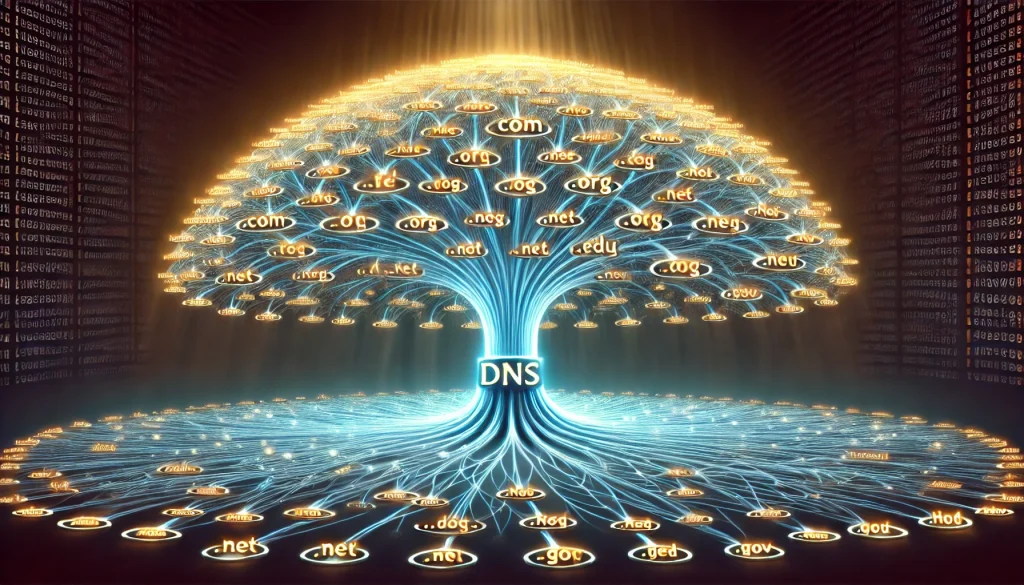DNS
Imagine the digital landscape of the DNS hierarchy as a grand, interconnected tree. At the very base of this tree is a small, yet fundamental dot, known as the root DNS. This root “.” is the cornerstone of the entire DNS structure, unassuming but vital.
From this root, branches extend outwards, each representing a top-level domain (TLD). These branches include familiar TLDs like “.com,” “.ai,” “.ro,” and many others, each one a crucial part of the Internet’s naming system.
• Root Dot (”.”): This is the central node, the foundation upon which all domain name resolutions begin. It may appear as a simple dot, but it’s a powerful connector, enabling the navigation from one domain to another.
• .com: One of the most popular and widely recognized TLDs. It’s like the main highway in the DNS landscape, bustling with activity and housing countless websites.
• .ai: A branch representing the growing field of artificial intelligence, full of innovation and forward-thinking technologies.
• .ro: The TLD for Romania, symbolizing the unique digital identity of a country within the global web.
• .org: A branch dedicated to organizations, especially non-profits, supporting various causes and communities worldwide.
• .net: Another significant TLD, often used by network providers and businesses, acting as the backbone of many digital infrastructures.
• .edu: Reserved for educational institutions, this branch nurtures the growth of knowledge and learning across the Internet.
• .gov: Representing government entities, ensuring the secure and official presence of governmental bodies online.Each of these branches supports numerous subdomains and websites, creating a vast and intricate web of information and services. The root “.” DNS and these TLDs together form the backbone of the Internet, ensuring that users can effortlessly navigate and find the resources they need.
1st after ROOT, TLD’s

Let’s extend the concept further by incorporating domain names branching out from the TLDs. Each TLD branch can have several smaller branches, each representing individual domain names. Here’s a detailed visualization:
Visualization Concept
Root Dot (”.”)
• Positioned at the base of the tree, glowing slightly to signify its foundational importance.TLD Branches
• - .com
google.com
amazon.com
facebook.com
• - .ai
openai.ai
deepmind.ai
artificial.ai
• - .ro
example.ro
university.ro
tourism.ro
• - .org
wikipedia.org
mozilla.org
unicef.org
• - .net
speedtest.net
slideshare.net
php.net
• - .edu
harvard.edu
mit.edu
stanford.edu
• - .gov
usa.gov
nasa.gov
whitehouse.govEach of these domain names can have further offshoots representing subdomains if desired. For instance, under google.com, there could be mail.google.com and maps.google.com.
